Evaluation of long-lasting microbial larvicide for malaria vector control in Kenya
- PMID: 27903292
- PMCID: PMC5131428
- DOI: 10.1186/s12936-016-1626-6
Evaluation of long-lasting microbial larvicide for malaria vector control in Kenya
Abstract
Background: Outdoor malaria transmission is becoming an increasingly important problem in malaria control in Africa. Larval control is a promising intervention as it can target both indoor and outdoor biting mosquitoes. However, the currently available biolarvicide formulations have a short effective duration, and consequently larval control incurs a high operational expense due to the requirement for frequent re-treatment of larval habitats. Formulations of biolarvicides with long-lasting effects is highly desired. A recently developed FourStar® slow-release briquet formulation of Bacillus thuringiensis israelensis and Bacillus sphaericus was evaluated to test its efficacy on malaria vectors.
Methods: The study evaluated FourStar™ briquets 180-days formulation under semi-natural and natural conditions to test their efficacy in reducing the mosquito population in western Kenya. The semi-natural habitats used the formulation dissolved in rainwater with appropriate concentrations, and second-instar larvae of Anopheles gambiae were introduced and the number of surviving larvae and pupae produced was recorded daily as the outcome. The briquets formulation was then tested in natural habitats for efficacy on pupal productivity reduction in highland and lowland sites in western Kenya. The formulation was finally tested for efficacy in reducing adult mosquito populations in randomized clusters in western Kenya highland.
Results: In semi-natural conditions, the FourStar™ briquets 180-days formulation completely inhibited mosquito pupal production in the first 3 months, and then reduced pupal productivity by 87-98% (P < 0.001) 4-6 months after application. In natural habitats, during the first 2 months no pupae were detected from any of the treated habitats in highland sites, and Anopheles spp. pupal density was reduced by 60-90% in the next 3-5 months (P < 0.001). In the lowland site, pupal productivity reduction was 100% in the first 3 months, and 75-90% in the next 4-5 months (P < 0.001). The randomized cluster trial found that the application of the briquets formulation reduced mean densities of indoor-biting mosquitoes by 76-82% (P < 0.001) and by 67-75% (P < 0.001) for outdoor-biting mosquitoes.
Conclusion: This study demonstrated that long-lasting biological larviciding was effective in reducing pupal productivity of larval habitats, and reducing indoor and outdoor resting mosquitoes. The study suggests that long-lasting microbial larviciding may be a promising complementary malaria vector control tool and warrants further large-scale evaluation.
Keywords: Bacillus sphaericus; Bacillus thuringiensis israelensis; Biological larvicide; Larval control; Long-lasting larvicide.
Figures
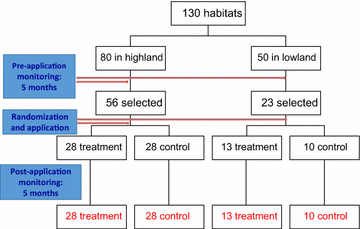
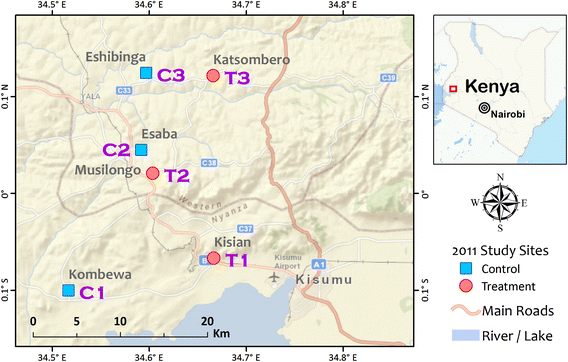

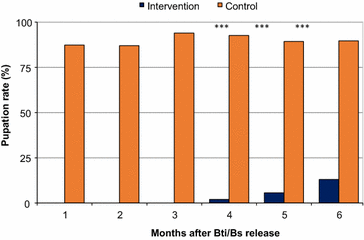
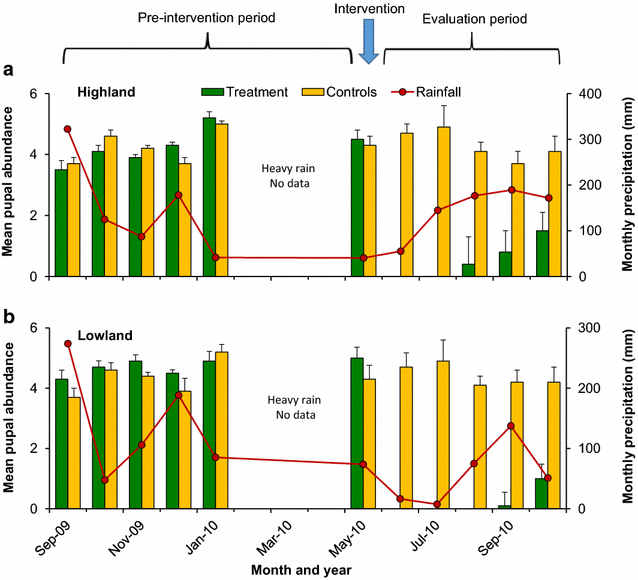
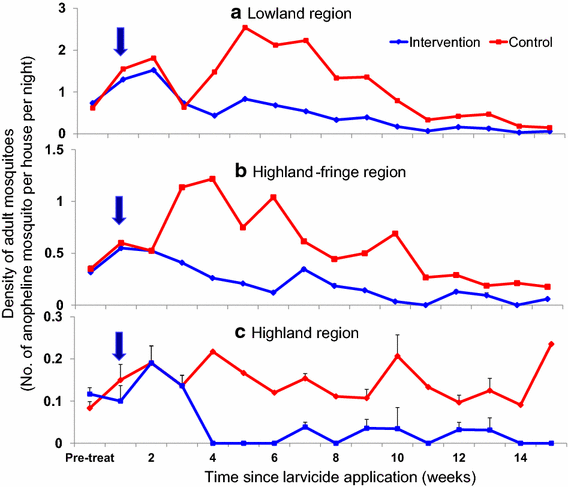
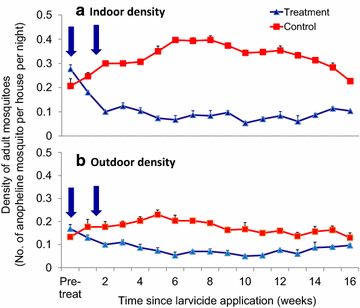
References
-
- WHO: World Malaria Report 2014. Geneva: World Health Organization; 2015.
MeSH terms
Substances
Grants and funding
LinkOut - more resources
Full Text Sources
Other Literature Sources
Miscellaneous

